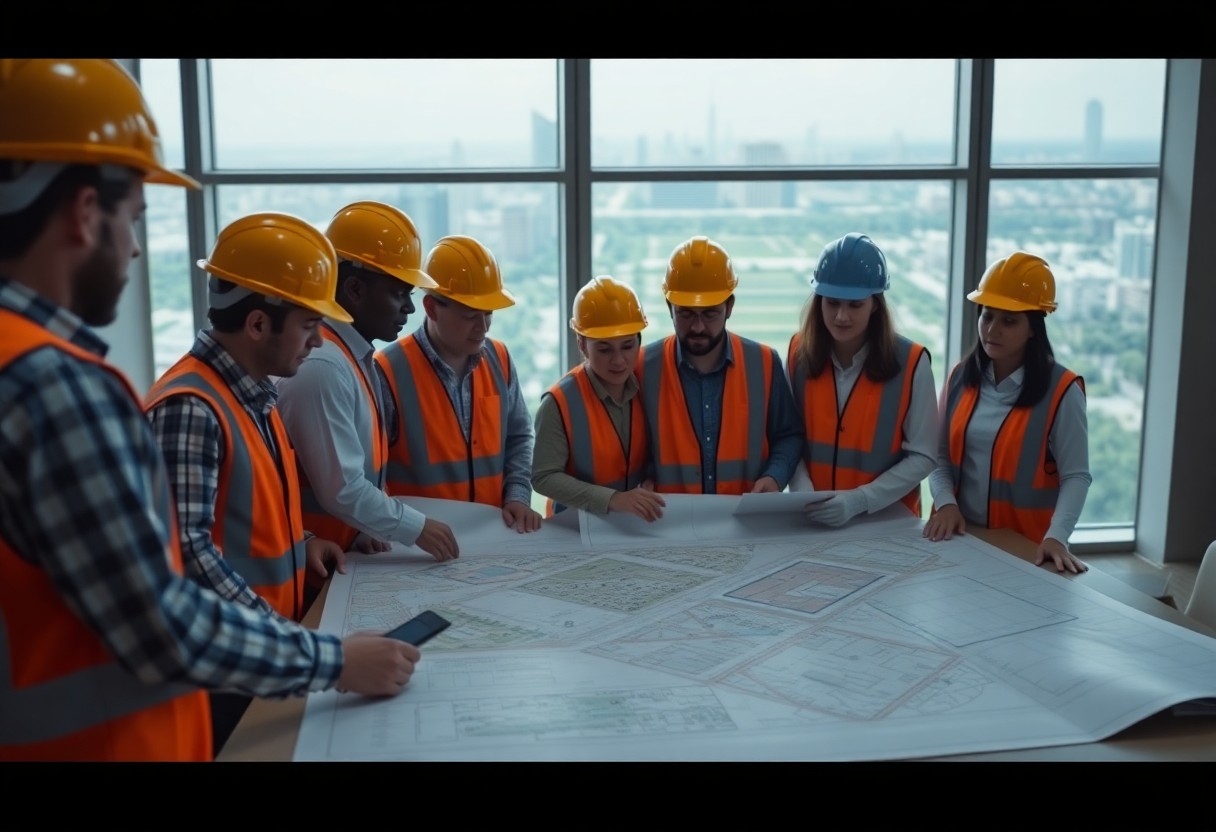It’s important for you to understand the significance of pursuing a Master of Environmental Planning (MEP) if you’re looking to make a positive impact on urban environments and sustainability. This advanced degree equips you with the skills necessary to address the complex challenges of land use, environmental management, and community development. As you navigate this field, you will learn to integrate ecological principles into planning processes, ensuring balanced growth while preserving natural resources. Whether you’re aiming to work in government, non-profits, or private sectors, the MEP program can be your gateway to becoming a leader in environmental planning.
Key Takeaways:
- The Master of Environmental Planning (MEP) program focuses on sustainable practices and policies, preparing students to tackle the challenges of environmental management and urban planning.
- Students in the MEP program engage in interdisciplinary studies, integrating knowledge from fields such as ecology, sociology, and economics to develop comprehensive planning solutions.
- Graduates of the MEP program are equipped to work in various sectors, including government agencies, non-profit organizations, and private consulting firms, contributing to environmental protection and community development efforts.
The Strategic Role of Environmental Planning in Modern Society
Environmental planning shapes how communities utilize their resources while promoting sustainability and resilience. With an increasing emphasis on ecological conservation, it helps create frameworks that integrate natural landscapes with urban development. You may witness how local governments employ environmental planners to address pressing concerns like habitat preservation and water quality, ensuring that growth does not come at the expense of the environment. By promoting green spaces and responsible land use strategies, environmental planning fosters a symbiosis between societal growth and ecological health.
Addressing Climate Change through Urban Development
Your urban environment plays a significant role in mitigating climate change impacts. Sustainable urban development focuses on reducing carbon footprints through efficient transportation systems and eco-friendly building practices. Initiatives like green roofs, urban forests, and mixed-use spaces not only promote biodiversity but also enhance the community’s quality of life. By prioritizing energy efficiency and integrating renewable resources, you help pave the way for resilient cities that can adapt to climate changes, making your community more sustainable and livable.
The Interconnection of Public Policy and Sustainable Practices
The synergy between public policy and sustainable practices is vital for effective environmental planning. Your local legislation can either encourage or hinder sustainable development initiatives, influencing how communities manage their resources. Policies that promote renewable energy use, prioritize conservation efforts, and incentivize green building can create a supportive environment for sustainability. Engaging with policymakers allows you to advocate for practices that protect the environment and promote resilience, ensuring that your community’s growth aligns with ecological well-being.
This interconnection can be seen through successful case studies such as San Francisco’s Zero Waste initiative, where progressive public policies have led to a significant reduction in landfill waste and increased recycling rates. Communities looking to transition to sustainable practices can benefit from replicating such models. Additionally, policies that enforce environmental regulations instill accountability among industries, prompting them to prioritize sustainability in their operations. Ultimately, your involvement in advocating for public policies that align with sustainable practices not only enhances community welfare but also contributes to a more ecologically balanced future.
Essential Skills and Knowledge Areas for MEP Professionals
Success as a Master of Environmental Planning (MEP) professional hinges on a blend of technical expertise and soft skills. Proficiency in environmental science, policy analysis, and spatial planning is important. You must also navigate stakeholder engagement with confidence, demonstrating your ability to foster collaboration among diverse groups, including government officials, the community, and industry representatives. Continuous learning about emerging technologies and sustainable practices will keep you ahead in this evolving field.
Environmental Regulations and Compliance
Navigating environmental regulations and ensuring compliance is a fundamental aspect of your role as an MEP professional. You will face various state and federal laws, such as the Clean Air Act and the National Environmental Policy Act, which dictate not only project design but also the assessment of potential environmental impacts. Staying updated on legislative changes and understanding the nuances of regulatory frameworks will enable you to effectively advocate for sustainable solutions while steering projects towards approval.
Geographic Information Systems (GIS) and Data Analysis
Mastering Geographic Information Systems (GIS) and data analysis equips you with vital tools for environmental planning. GIS allows you to visualize and interpret spatial data, facilitating better decision-making in land use, resource management, and environmental impact assessments. Being adept in data analysis enhances your ability to identify patterns and trends, which are pivotal for forecasting environmental changes and informing policy recommendations.
GIS technology integrates various data types, including satellite imagery, land use maps, and environmental data, to create detailed visualizations that aid in your planning processes. For example, utilizing GIS to analyze flood risk areas can enhance urban planning by ensuring appropriate building codes and zoning regulations are enforced in vulnerable zones. Similarly, combining demographic data with environmental assessments can help identify potential social impacts of proposed projects, ensuring that your plans are not just sustainable but also equitable. Familiarity with GIS software, such as ArcGIS or QGIS, will position you to leverage these powerful analytical capabilities effectively.

Navigating the Challenges of Environmental Planning
Environmental planning poses significant challenges, as it requires synthesizing diverse interests and addressing complex regulatory environments. Successful environmental planners adeptly analyze land use, resource management, and legislative requirements while grappling with issues like climate change, pollution, and habitat loss. You play a key role in fostering collaboration among government agencies, businesses, and communities, ensuring that competing interests are balanced to achieve sustainable solutions.
Balancing Economic Growth with Ecological Preservation
Your ability to reconcile economic development with ecological conservation is vital for the future of urban and rural planning. By focusing on green infrastructure, sustainable land practices, and innovative resource management, you can support initiatives that foster economic vitality without jeopardizing environmental integrity. Strategies like mixed-use developments and renewable energy projects can effectively bridge the gap between growth and green priorities.
Engaging Stakeholders and Community Advocacy
Effective communication with stakeholders and community members forms the backbone of successful environmental planning. Engaging with various interest groups, including local residents, businesses, and advocacy organizations, enables you to gather diverse inputs and foster trust in the planning process. Methods such as public meetings, surveys, and collaborative workshops aid in identifying shared goals and addressing concerns, paving the way for more responsive and inclusive decisions.
Involving stakeholders in the planning process not only enhances transparency but also cultivates a sense of ownership and responsibility towards environmental initiatives. You can employ techniques like participatory mapping or community-based climate assessments to empower individuals and local organizations to contribute to decision-making. By actively listening and incorporating community feedback, you ensure that plans reflect the unique values and needs of the area, thus building stronger grassroots support for sustainable outcomes. Engaging residents in early planning stages can mitigate conflicts down the line, solidifying a more unified approach to environmental stewardship.
The Future Landscape of Environmental Planning
The future of environmental planning is poised for transformation, driven by an increasing emphasis on sustainability, technology, and community engagement. As climate change challenges intensify, planners will adopt innovative strategies and collaborate across sectors to create resilient ecosystems. Your role as a Master of Environmental Planning graduate will be instrumental in navigating these complexities, shaping policies that prioritize environmental justice and sustainable development. Adapting to these changes now will equip you with the skills necessary to lead the way in sustainable practices that balance ecological preservation with urban growth.
Innovative Technologies and Their Impacts
Emerging technologies like Geographic Information Systems (GIS), drone surveying, and artificial intelligence are revolutionizing environmental planning. These tools allow you to analyze complex data sets for better decision-making, optimize land use, and streamline project implementation. For example, GIS enables real-time mapping of environmental changes, assisting you in predicting potential ecological impacts and supporting effective land management. This strategic application of technology not only enhances planning efficiency but also fosters informed community engagement.
The Shift Towards Resilience and Adaptation Strategies
As climate change effects become more pronounced, environmental planning increasingly emphasizes resilience and adaptation strategies. This shift encourages planners like you to develop proactive measures and design frameworks that help communities adapt to environmental changes in more sustainable ways.
Incorporating resilience strategies allows you to create projects that withstand extreme weather events, rising sea levels, and other climate-related challenges. For instance, cities are implementing green infrastructure solutions like urban forests, permeable pavements, and stormwater management systems to mitigate flooding risks. Communities are also investing in buffer zones and coastal restoration projects, acknowledging that adaptation requires both immediate actions and long-term planning. Through fostering collaboration among stakeholders and empowering local communities, your work will be vital in building resilient environments that sustain not only current populations but future generations as well.

Crafting a Successful Career Path in Environmental Planning
Building a successful career in environmental planning requires strategic choices and a forward-thinking approach. As you navigate this dynamic field, consider the skills and experiences that will set you apart. Tailor your educational background and seek opportunities that align with sustainable practices, regulatory frameworks, and community engagement. Take the time to refine your expertise and network, which will open doors to impactful roles where you can contribute to shaping resilient environments.
Educational Requirements and Professional Certifications
A solid educational foundation is imperative for your journey in environmental planning. Typically, a bachelor’s degree in environmental science, urban planning, or a related field serves as a starting point. Consider pursuing a Master of Environmental Planning (MEP) to deepen your knowledge and enhance your credentials. Furthermore, obtaining professional certifications from recognized organizations can distinguish you in the job market and showcase your commitment to ongoing professional development.
Networking and Finding Opportunities in a Competitive Field
Effective networking is a powerful tool in the competitive landscape of environmental planning. Engaging with professionals through conferences, workshops, and local events can lead to valuable connections and job opportunities. Utilize platforms like LinkedIn to showcase your expertise, joining interest-specific groups where you can exchange insights and discover potential openings within organizations focused on sustainability.
Building a robust professional network is not just about knowing the right people; it’s about fostering genuine relationships that can lead to meaningful collaborations. Attend industry conferences, participate in community planning forums, and volunteer for local environmental initiatives to expand your footprint. Following industry leaders and engaging in discussions on social media channels can also help you stay updated on emerging trends and job opportunities. Consider asking for informational interviews, as they not only provide insights into the field but can also position you favorably for upcoming roles based on personal connections. Ultimately, your proactive approach in networking will create pathways to roles that align with your career aspirations in environmental planning.
Final Words
Ultimately, pursuing a Master of Environmental Planning (MEP) equips you with the knowledge and skills necessary to address complex environmental challenges. This program not only prepares you for a rewarding career in urban planning and sustainability but also empowers you to make impactful decisions that benefit communities and the planet. By understanding the intricate balance between development and environmental stewardship, you’ll be poised to drive positive change in your professional pursuits and beyond.

